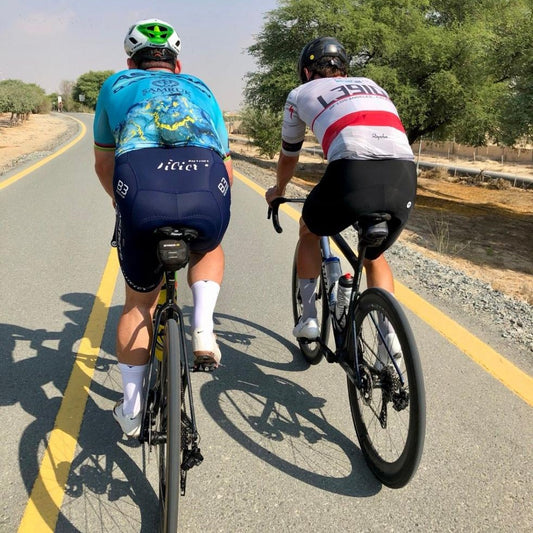Proven in the Wind Tunnel: Veto 1.0 Leads the Pack
At Veto, we don't just claim speed - we prove it. Our Veto 1.0 Cycling Socks underwent rigorous independent testing at the Silverstone Sports Engineering Hub (SSEH), the same facility trusted by World Tour teams and elite triathletes.
Key Findings:
1. Best-in-Class Among Knitted Socks: Veto Cycling 1.0 outperformed a range of high-performance, comfort-oriented socks - including Rapha Pro Team, Assos GT C2, Castelli Superleggara 18, and DeFeet Aireator 6" - all have a knitted construction.
2. Significant Savings: At 50 kph, Veto Cycling 1.0 saved over 15 watts compared to the least efficient competitor, and on average across all tested speeds, delivered a 4.6* watt saving.
3. Real-World Conditions: Tests were conducted across various speeds (30, 40, and 50 kph with yaw angle = 0) to best simulate actual riding and real racing scenarios plus to make it straightforward comparing with market-leading brands.
Veto Cycling 1.0 Sock vs Aero Specialist? We tested that too. See our Aero Results →
Performance Snapshot
The table below shows the aerodynamic drag (measured in watts) recorded in controlled wind tunnel testing at the Silverstone Sports Engineering Hub. Each value represents the amount of power required to overcome drag at a given speed. Lower is better.
We tested the Veto Cycling 1.0 sock alongside a range of premium, knitted cycling socks from respected brands: Assos, Castelli, DHB, DeFeet, Pongo, Rapha, and Spatz.
The results speak for themselves: The Veto Cycling 1.0 sock delivered the lowest average drag across all tested speeds - making it the most aerodynamic sock.
| Brand | 30 kph | 40 kph | 50 kph |
|---|---|---|---|
| Veto Cycling 1.0 | 130.8 W | 297.8 W | 572.6 W |
| Assos GT C2 | 132.1 W | 299.8 W | 579.0 W |
| Castelli Superleggara 18 | 131.5 W | 300.0 W | 576.1 W |
| DHB Aeron Lab | 131.7 W | 303.4 W | 579.4 W |
| DeFeet Aireator 6" | 132.1 W | 303.3 W | 579.4 W |
| Pongo PRX 1.0 | 131.4 W | 304.3 W | 587.8 W |
| Rapha Pro Team | 132.4 W | 302.4 W | 577.0 W |
| Spartz SOKZ PRO W | 130.7 W | 302.8 W | 587.4 W |
Note: Lower wattage indicates better aerodynamic performance.
Understanding the Aerodynamics
Aerodynamic efficiency isn’t just about sleek looks - it’s about how air moves around your legs in motion. At lower speeds (around 30 kph), the airflow around a leg or sock-clad cylinder tends to separate from the surface earlier, creating a larger low-pressure wake and increasing drag.
The Veto Cycling 1.0 surface texture helps trigger an earlier transition to a turbulent boundary layer, which, counterintuitively, stays attached to the leg for longer - reducing separation and drag.
As speeds increase to 40 kph and beyond, the airflow naturally becomes more turbulent. The Veto Cycling 1.0 sock design is optimized for this regime: its texture manages turbulence in a way that delays flow separation, minimizes the wake, and ultimately lowers the aerodynamic cost of every pedal stroke.
Visualising the Advantage
The charts highlight how Veto Cycling 1.0 socks consistently outperformed the line-up of premium knitted cycling socks in wind tunnel tests across 30, 40, and 50 kph.
Comfortably the Fastest
The data is clear: Veto Cycling 1.0 socks don’t just compete - they lead. As we've seen, it delivered the lowest average drag across all speeds when compared to a line-up of premium knitted socks.
Whether you're racing, training, or chasing your personal best, you're not just wearing a sock - you're gaining a proven aerodynamic edge.
* The average watt saving quoted in our wider marketing (3.6 watts) reflects a broader set of test conditions. The results presented here follow the same standard used by leading brands - ensuring a like-for-like comparison.
















